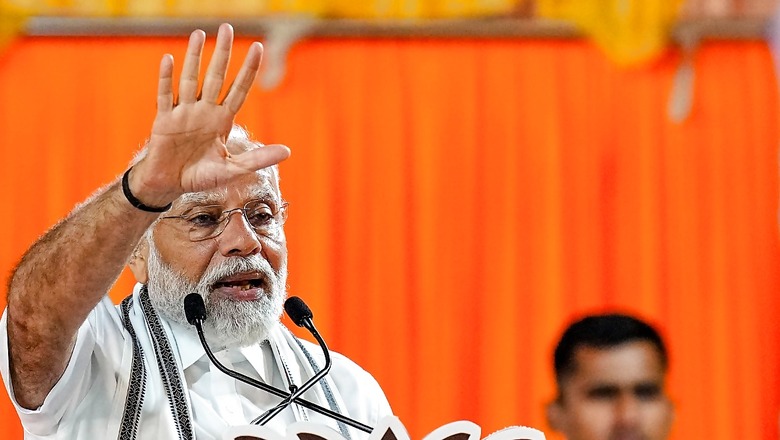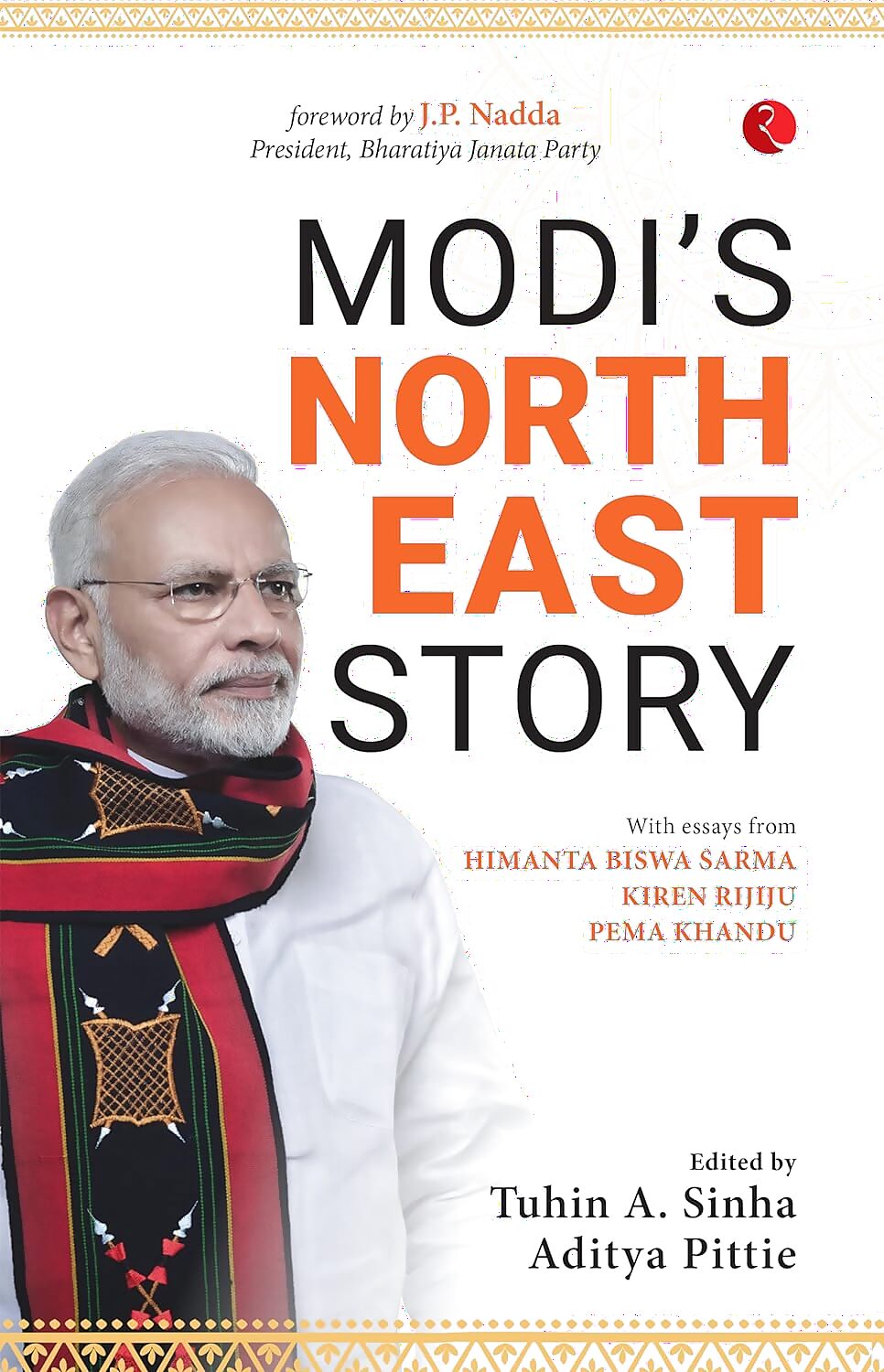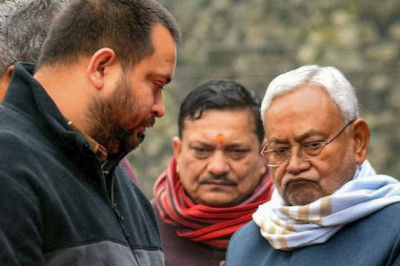
views
As the dust settles on the pages of history, a remarkable tale emerges—one that narrates the metamorphosis of India’s Northeast under the visionary leadership of Narendra Modi. At the heart of this narrative lies a region once marginalised, now revitalised, owing to a concerted effort towards holistic development and social harmony. A recent literary contribution, ‘Modi’s Northeast Story’, penned by Tuhin A. Sinha, the BJP’s national spokesperson, and Aditya Pittie, an angel investor, serves as a beacon illuminating this transformative journey.
Blessed with unparalleled natural beauty, extraordinary biodiversity, and a skilled workforce, the region had languished in obscurity for far too long. However, under the dynamic leadership of Modi, a new dawn has emerged for the Northeast.
Historical context and transformation
The seven sister states and one brother state of the Northeast—Assam, Arunachal Pradesh, Manipur, Meghalaya, Mizoram, Nagaland, Tripura, and Sikkim—share borders with neighbouring countries such as Bhutan, China, Myanmar, and Bangladesh. This geographic location has historically endowed the region with a rich tapestry of social and cultural connections, often referred to as ‘Suvarnabhumi’ (land of gold) in ancient texts. The government has made efforts for the surrender of militants through various peace talks and accords, the rehabilitation of surrendered insurgents, the creation of several autonomous councils for different tribal groups, the removal of the Armed Forces (Special Powers) Act (AFSPA) from several districts, and the reduction of border conflicts, among many other measures. The signing of the Karbi Peace Accord, the Assam Adivasi Peace Accord, the Dimasa Peace Accord, and the Bodo Peace Accord are examples of how the government has made a lasting difference.

Infrastructure Development and Connectivity
The sheer magnitude of the all-round transformation of the Northeastern states in the last decade is a case study for all scholars of social sciences and public administration. The speed of infrastructure projects undertaken in border areas has boosted the standard of living in far-flung districts. Northeast India witnessed an unprecedented jump in the number of airports in the North Eastern Region (NER), which rose from nine to 16, and the number of flights has increased from about 900 to 1,900 post-2014.
Some Northeastern states have made their way onto India’s railway map for the first time, and efforts are being made to expand the waterways too. At the same time, the restoration of age-old conflicts and improved law and order situations have led to record tourist footfalls in the region.
The ‘Act East Policy’ and Strategic Initiatives
Modi changed the ‘Look East Policy’ to ‘Act East Policy’ and took a holistic approach to tackle the challenges of the region. The launch of the Act East Policy has opened new avenues for trade and collaboration, positioning the Northeast as a gateway to Southeast Asia. Through enhanced connectivity and strategic collaborations, the region emerges as a pivotal player in fostering regional integration and economic growth. To realise this potential, work is resolutely underway on projects like the India-Myanmar-Thailand Trilateral Highway (IMT Highway) and the Agartala-Akhaura rail project. Once complete, these would be game-changers for the region. When the outlook changes, the rest of the changes are mere formalities.
Leadership and people-centric governance
Unlike most PMs in the past who handled the Northeast from a distance, PM Modi has visited the Northeast around 60 times in nine years, which is perhaps more than the total number of visits by all his predecessors put together. The result is a miraculous transformation in the region, with the Northeast being cited all over as the Modi government’s development model.
Inclusivity and cultural preservation
It may be noted that in the last few years, the Northeast has witnessed many firsts that should have happened long, long ago. Almost 60 years after Nagaland attained statehood, the national anthem was played inside the Nagaland Assembly for the first time on February 21, 2021. Similarly, the Tripura Assembly played the national anthem for the first time on March 23, 2018, after the BJP government was sworn in the state. For the first time since our independence, our most far-flung villages on the border have been given top priority for development and employment generation under the recently launched Vibrant Village Programme.
These endeavours epitomise a commitment to inclusivity and progress, reflective of PM Modi’s mantra of ‘Sabka Saath, Sabka Vikas’.
Economic Progress and Social Development
While infrastructure and economic development are crucial, the preservation and promotion of the unique cultural heritage of the Northeast have not been overlooked. This transformation didn’t materialise overnight. Economic indicators underscore this remarkable turnaround, with the Northeast witnessing a surge in GDP and trade, coupled with a decline in insurgency and enhanced connectivity. The cumulative GDP of the Northeastern states has more than doubled from 2.97 lakh crore to 6.81 lakh crore, and their share of the Indian GDP has increased from 2.6 per cent in 2013-14 to 2.9 per cent in 2021-22. The Northeast has undergone a tremendous economic transformation under the Modi government.
Tripura
For several decades, the progress of Tripura had been marred by poor connectivity, geographical isolation, under-utilisation of resources, shutting down of industries, limited infrastructure development, 25-year-long communist misrule, and the indifference of Union governments.
When Modi came to power in 2014, he took up the cause of Northeast India’s development in a mission mode. Tripura was one of the biggest beneficiaries of his vision, where he advocated the HIRA (Highways, Internet, Railways, and Airways) model of development. When the Bharatiya Janata Party (BJP) was elected to power in the state in 2018, the double-engine government made a massive difference in the lives of ordinary residents of Tripura. One of the key highlights of Tripura’s success story has been the increased focus on the development of highways and inter-state connectivity. The objective behind it is to increase connectivity to industrial clusters and enhance logistical efficiency and freight movement.
In October 2020, the Union Minister of Road Transport and Highways, Nitin Gadkari, laid the foundation stone for nine national highway projects in Tripura. The Centre also sanctioned an amount of Rs 456 crore in February 2022 for the upgradation of the Lalchara-Kanchanpur section of the National Highway (NH) 44A under the Bharatmala Pariyojana. In December of that year, PM Modi inaugurated a project to widen NH 8. He also laid the foundation stone for 32 road projects under the Pradhan Mantri Gramme Sadak Yojana (PMGSY). The PM also launched a total of 112 road projects and district highways spanning 542 km.
In June 2023, it was recommended by the PM Gati Shakti national master plan that a 135-km stretch of the Khowai-Teliamura-Harina highway be widened into two lanes at a cost of Rs 2,486 crore. For most of its history, Tripura had only metre-gauge railway tracks. As such, residents of the state had to travel to Assam to board trains such as the Shatabdi and Rajdhani Express. It was the only way one could travel to far-off destinations such as Delhi, Kolkata, Chennai, and Bengaluru via train from Tripura. All of this changed in January 2016, when the first broad-gauge train entered Agartala.
One of the promises made by Modi to the people of Tripura was the development of airways. In January 2022, he inaugurated a new integrated terminal building at the Maharaja Bir Bikram (MBB) Airport, which is equipped with state-of-the-art facilities. In April 2023, the second-largest air cargo terminal in the Northeast was inaugurated at the MBB airport.
In October 2022, the foundation stone of the Tripura National Law University was laid at Narsingarh, beside the Maharaja Birendra Kishore Manikya Museum and Cultural Centre in Agartala. A month later, Chief Minister Dr (Prof) Manik Saha inaugurated the Tripura Film and Television Institute (TFTI) in Agartala. In December 2022, PM Narendra Modi inaugurated the state’s first dental college. Recently, the state government launched the ‘Tripura Energy Vision 2030 Road Map’ with the aim of generating about 500 MW of solar power by 2030.
Tripura has also identified more than 2,000 acres of land for public-private partnerships, industrial development, special economic zones (SEZs), and sector-specific projects with support from the Modi government at the Centre. Further, as the 68 per cent geographical area of Tripura state lies under the Sixth Schedule, which is governed by the Tripura Tribal Areas Autonomous District Council and is home to 19 tribes, it has always been a priority of the BJP-led double-engine government.
Every measure has been taken towards the socioeconomic development of the indigenous people residing in TTAADC areas. Most recently, a historic accord has also been signed between the Government of India, the government of Tripura, and other local tribal organisations, to push special emphasis on the development of the indigenous community at large in the thought process of PM Narendra Modi, which specifically focuses on the development of the most deprived communities and the vision to bring them into the mainstream of development.
The contagious spirit of ‘Atmanirbhar Bharat’ has begun to change the attitude of the residents of the state. The ‘cholbe, cholche’ sense of complacency is now under challenge. People are actively giving up the laidback attitude and joining the mainstream with zeal and fervour. With the entry of private players now, besides the state-run BSNL services, internet penetration in Tripura has increased by several folds. CM Manik Saha has also attested to this fact and said that Tripura now has the third-highest high-speed internet in the entire country. Investments by domestic and foreign entities are rapidly expanding. This has brought about positive changes in people’s way of life.
Tripura is no longer a state whose geographical location can only be expressed in terms of its proximity to Assam. The state has not only grown by leaps and bounds but has also been able to showcase our unique identity, culture, and success story to the rest of the country.
Conclusion
In a world often beset by cynicism, the Northeast stands as a beacon of possibility—a testament to the transformative power of visionary leadership and collective endeavour. In decoding ‘Modi’s Northeast Story’, we unearth not just a tale of development but a narrative of resilience, renewal, and the promise of a brighter future for all. Unlike most Indian PMs who did not challenge the status quo, PM Modi thrives on taking the uncharted route. Social justice and historical course correction are always high priorities of the Modi government, be it about individuals or a region. As we navigate through the labyrinthine corridors of change, it’s imperative to acknowledge the voices and narratives that animate this saga. ‘Modi’s Northeast Story’ serves as a conduit, amplifying the voices of facilitators, executors, researchers, and witnesses, democratising this tale of hope and empowerment.
Capt. GS Rathee, OSD to Minister of State, Tripura & Formerly Advisor, Tripura Tribal Areas Autonomous District Council, Aviator & Ex. official Government of India. Views expressed in the above piece are personal and solely that of the author. They do not necessarily reflect News18’s views.




















Comments
0 comment